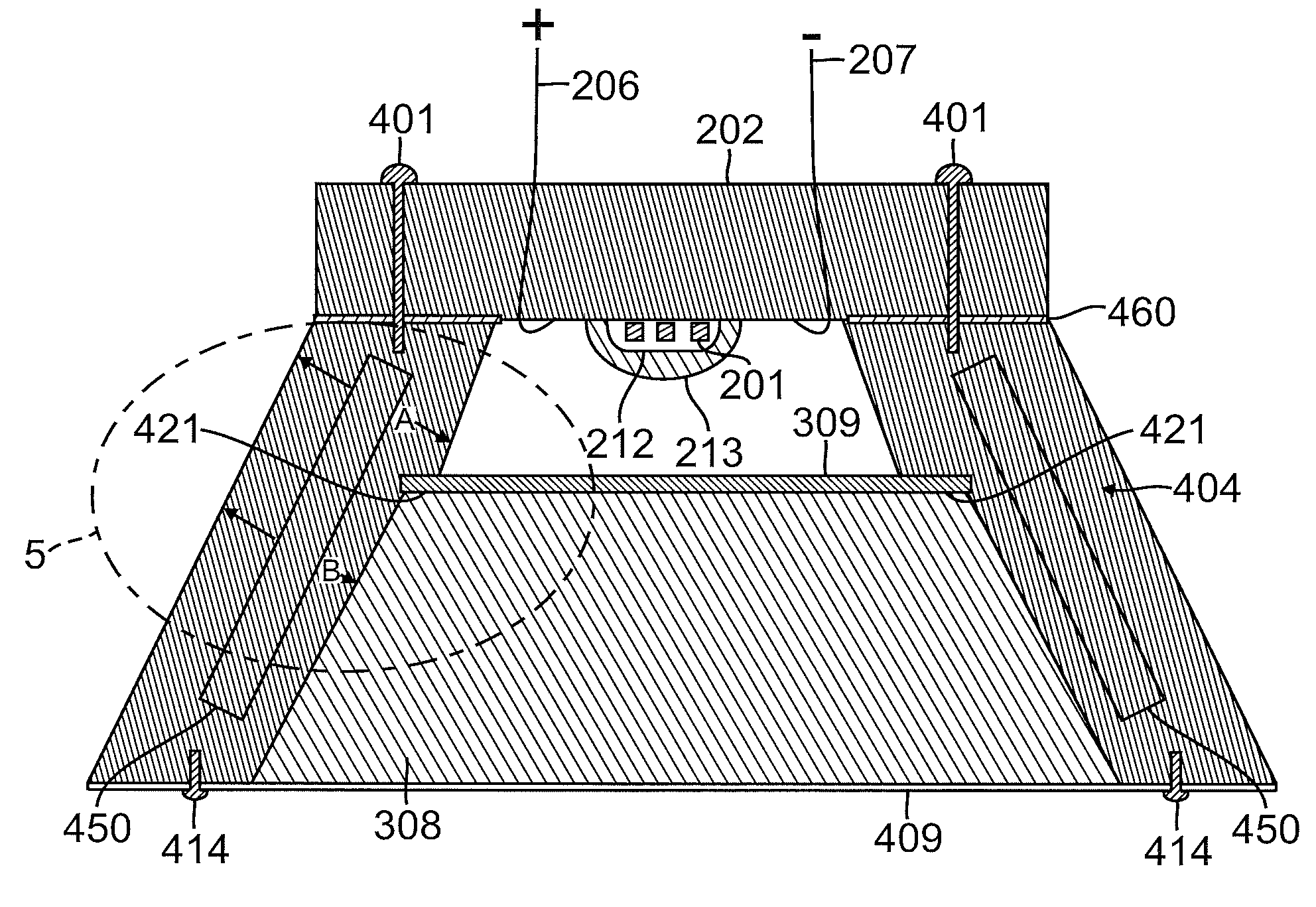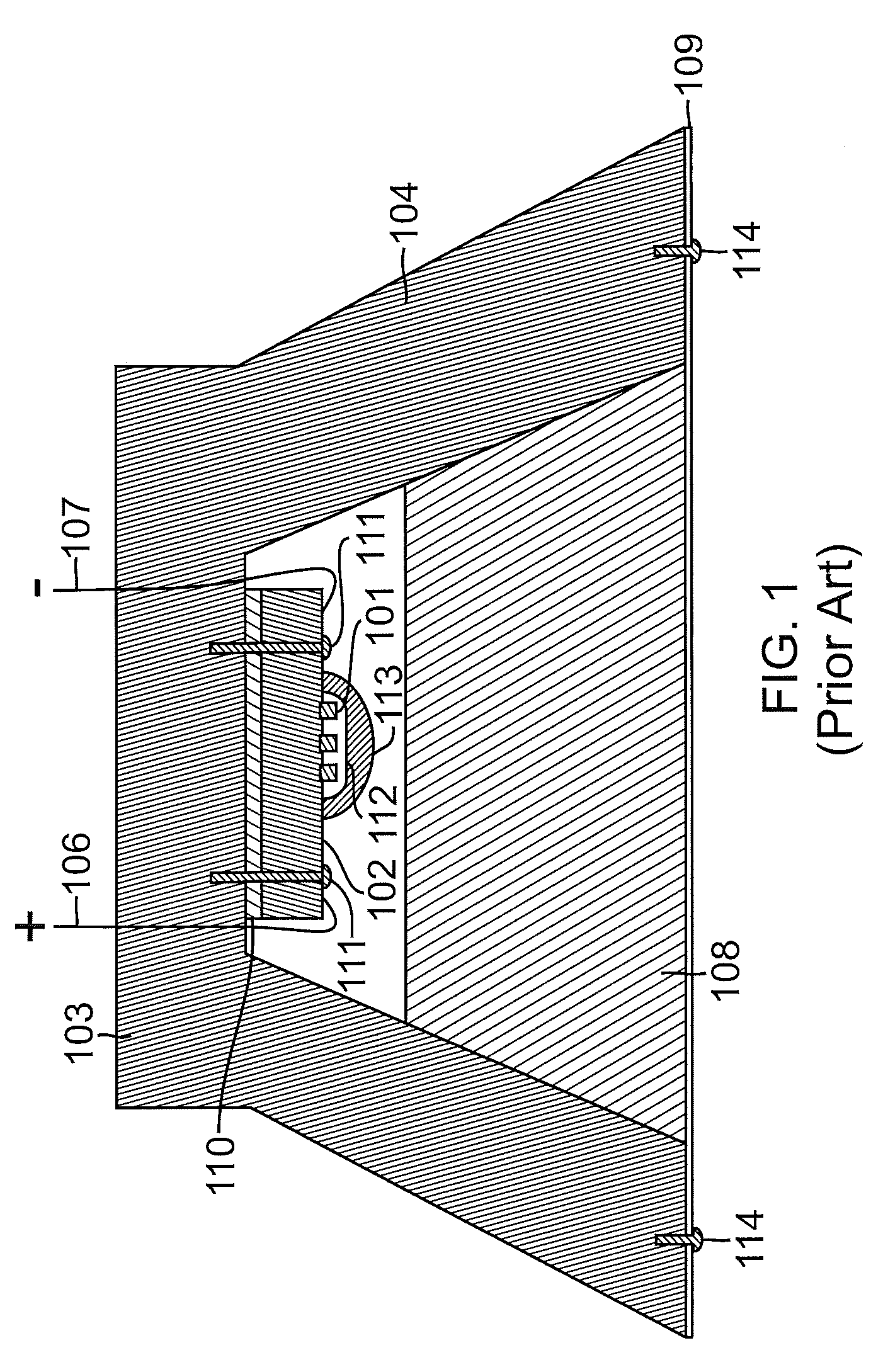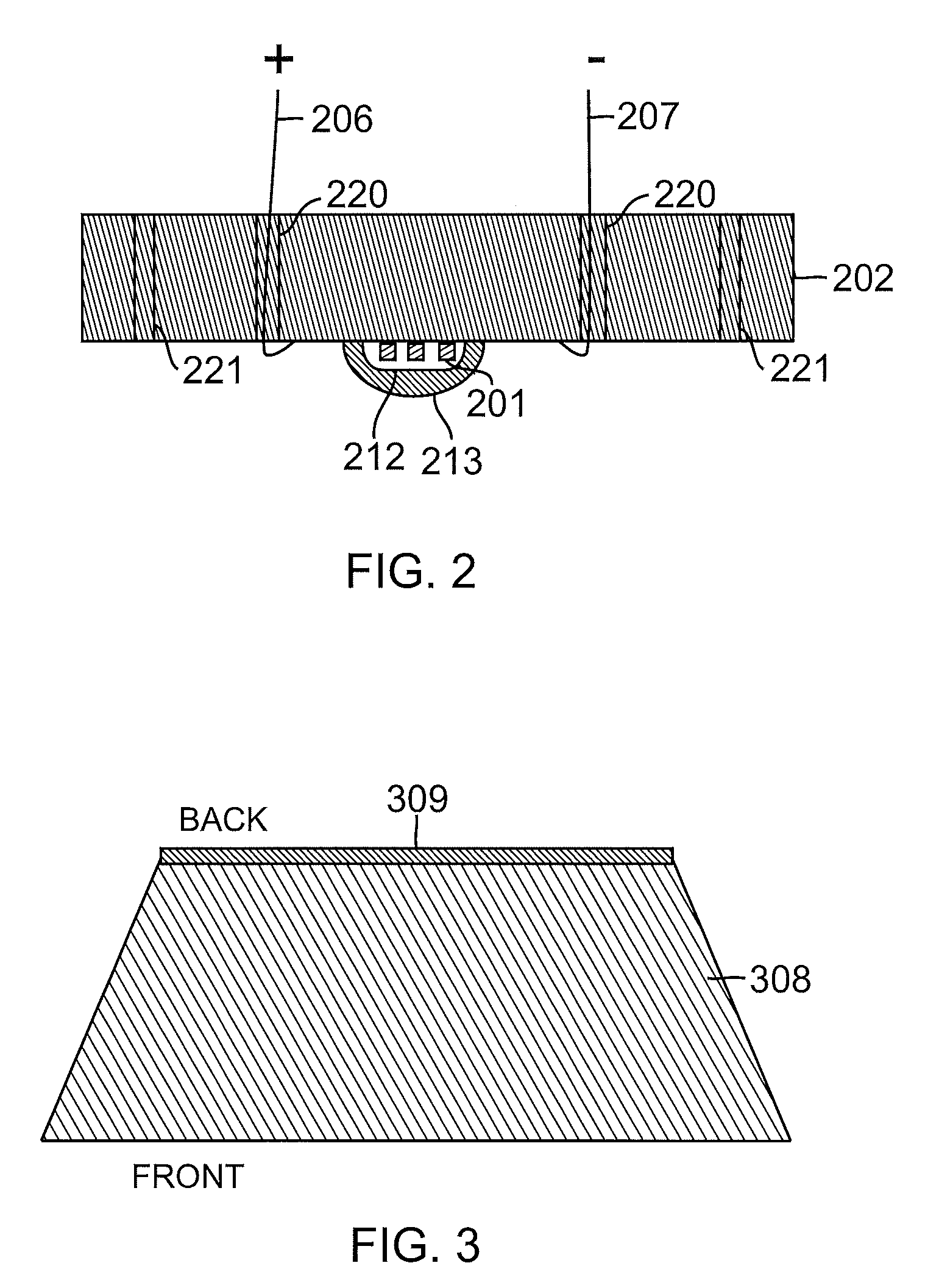Heat sink base for LEDS
a technology of leds and sinks, applied in the field of light-emitting diodes, can solve the problems of reducing the efficiency of leds, generating color shifts, and producing more heat, and achieve the effects of enhancing heat dissipation, enhancing heat dissipation, and operating more efficiently
- Summary
- Abstract
- Description
- Claims
- Application Information
AI Technical Summary
Benefits of technology
Problems solved by technology
Method used
Image
Examples
Embodiment Construction
[0021]Methods and systems for enhancing the optical performance of a LED by reducing the temperature Tj of a junction or active area of the LED and / or by reducing the temperature of one or more phosphors of the LED are disclosed.
[0022]As discussed above, the heat produced by current flow through a light emitting diode (LED) can be accommodated, so as to facilitate the use of the higher currents that are required in order to provide brighter LEDs. The temperature Tj of the junction of an LED must typically be kept below approximately 150° C. in order for the LED to produce light efficiently.
[0023]The temperature of any phosphors that are used to modify the color of light for an LED must be as low as possible so as to provide desired color conversion efficiency. As those skilled in the art will appreciate, the Stokes shift will tend to cause the phosphors to heat up. The Stokes shift is the difference in the energy levels between the absorption spectra and the emission spectra of a fl...
PUM
 Login to View More
Login to View More Abstract
Description
Claims
Application Information
 Login to View More
Login to View More - R&D
- Intellectual Property
- Life Sciences
- Materials
- Tech Scout
- Unparalleled Data Quality
- Higher Quality Content
- 60% Fewer Hallucinations
Browse by: Latest US Patents, China's latest patents, Technical Efficacy Thesaurus, Application Domain, Technology Topic, Popular Technical Reports.
© 2025 PatSnap. All rights reserved.Legal|Privacy policy|Modern Slavery Act Transparency Statement|Sitemap|About US| Contact US: help@patsnap.com



